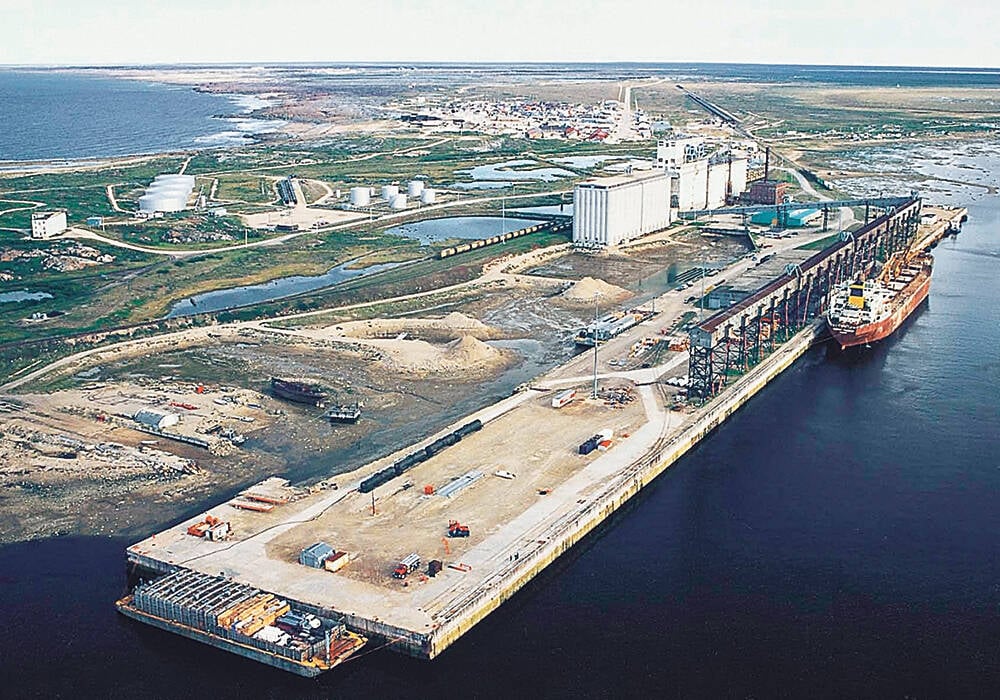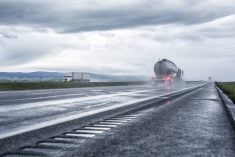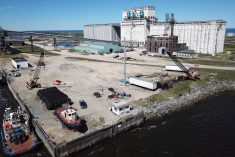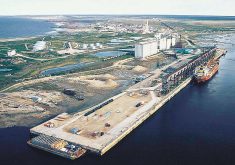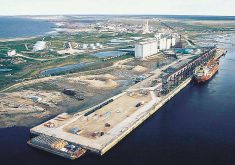Move over Churchill. Another port proposal would see cargo flow in and out of Western Canada through Hudson Bay.
The Neestanan Project wants a second, year-round port built on its shores.
The Neestanan (Cree for “all of us”) Utility Corridor is an Indigenous-led effort to develop a trade corridor across the northern Prairie provinces that would terminate at a four-season, multi-modal port on Hudson Bay north of the Nelson River.
Read Also

The sneak peek of Manitoba Ag Days 2026
Canada’s largest indoor farm show, Manitoba Ag Days, returns to Brandon’s Keystone Centre Jan. 20-22, 2026. Here’s what to expect this year.
Humble beginnings
Neestanan board member Robyn Lore said the idea stemmed from a dinner in the winter of 2019 in Edmonton, hosted by Chief Rupert Meneen of the Tall Cree First Nation in Alberta, to discuss economic planning and development with several chiefs from Alberta and across the Prairies.
“I was invited to (it) by the then-chief of Fox Lake Cree Nation, Walter Spence,” he said. “And out of that grew the idea for an Indigenous-owned corridor and the plan to figure out how to have an all-year multi-modal port on Hudson Bay.”
Since that dinner, Fox Lake Cree Nation, 55 kilometres northeast of Gillam, has taken formal leadership of the project and several First Nation communities from all three Prairie provinces are supporting the effort.
According to the project website, the vision of the corridor is to “deliver economic, environmental and social benefits to First Nations’ communities and Canada by diversifying how we transport natural resources to national and international markets, safely and responsibly.”
Why it matters: A year-round port on Hudson Bay could allow commodities, including agricultural products, to be moved more efficiently to international markets.
The idea of building a port at the mouth of the Nelson River isn’t new. When Wilfred Laurier’s federal government was building the Hudson Bay Railway in the 1910s, it chose the terminal port location on Hudson Bay between two options: Port Nelson on the north shore of the Nelson River, and Churchill.
Initially, the government considered Port Nelson to be the better economic choice, which led to the start of port construction. However, issues with silt accumulation from the river’s outflow led to abandonment of that location and Churchill was selected instead.
Today, the port at Churchill has limitations of its own.
“I want to emphasize that we’re not against the Churchill port. We just don’t think it’s set up to be a big international multi-modal port for big ships,” said Lore. “It’s a wonderful natural port, but it was done in a time when the ships were much smaller.”
Climate change
Larger freighters aren’t the only things that have changed since Churchill was established as a port. The most notable is the climate.
The ability to lay rail bed on rocky ground instead of muskeg was one of the initial reasons for choosing Port Nelson over Churchill. As the climate warms, the muskeg traversed by the Hudson Bay Line is frozen for fewer months and is less stable for longer periods.
Since ships can only dock in summer, this creates a logistical headache. Indeed, it is consistently cited as the biggest limiting factor for the port and the rail line. The Hudson Bay Line turns north into the muskeg at Amery, Man., about 60 km northeast of Gillam.
“It changes how you operate, and it’s a factor in the lowlands around Hudson’s Bay and, in fact, the whole Canadian Arctic,” said Lore. “It’s not a factor when the ground is high or rocky, but it really is a factor when it’s swampy or muskeggy, and when that starts to melt, it’s a real problem to build on and develop reliably.”
As well, the ice-free period on Hudson Bay is lengthening and the ice that does form is thinning.
“It doesn’t get as thick as it used to, and it’s salt water ice, which is structurally less solid than fresh water ice,” says Lore, who added that a local once described first year, salt water ice as more like hard slush than structural ice.
“The metre or so of ice you get across the Hudson Bay is not a big deal for a 300 to 400-metre-long world-class freighter or container ship, as long as it’s built for it,” said Lore. “The Russians operate further north in their Arctic than Hudson’s Bay, and they do it quite successfully.”
The Prairies have seen massive economic and population growth in the last 100 years. When the Port of Churchill was established, grain was the largest export from the Prairies, and the port’s main purpose was to move wheat into international markets. Today, the Prairie provinces export nearly half a trillion dollars worth of goods per year.
A shorter route
The proposed new route would shorten the distance to many important markets for prairie-produced goods. Lore cites potash as one example.
“Saskatchewan and Manitoba have about half of the world’s potash reserves,” he said. “Brazil is a big importer of potash, about 12 million tons a year. And we’ve talked to people in Brazil who would love to lock in a long-term supply of potash. The Hudson’s Bay route is much more efficient.”
The current route has Saskatchewan potash shipped by rail across the Rockies to Port Moody, then down the western coast to the toll-ridden Panama Canal and east to Brazil.
The Port Nelson route is 630 kilometres closer by rail than west coast ports and 3,800 kilometres closer to Brazil by ship. And it’s not just Brazil; Europe and Africa are also markets more easily reached via a port on Hudson Bay.
Lore uses potash as an example because it would be a simple first step to set up a potash port.
“A potash port is a shed and a conveyor belt. That could be built pretty expediently out there.”
Port Nelson vs. Churchill
Is a year-round port on the Hudson Bay a good idea? Some, including Barry Prentice, professor of supply chain management at the University of Manitoba, say it’s inevitable.
“We should be thinking about it as the east coast of the Prairies, and we need to develop our east coast for the sake of our regional economy,” said Prentice.
But such a project would have a hefty price tag.
“When we start looking at these ideas, we’re talking absolute billions of dollars,” said Prentice. “Even building a terminal to handle potash would not be cheap; there are huge investments that are needed. The question is, who’s got the money? Well, Alberta does have the money. They can do it.”
Alberta, with cancellation of the Keystone XL pipeline and increasing regulatory challenges that impede Alberta petroleum products from reaching tidewater, needs it too.
But Prentice is not so certain that Port Nelson is the answer. He believes Churchill has a lot to offer.
“You don’t just have a natural port there, you’ve got all the other infrastructure,” he said. “You’ve got a major airport; you’ve got a hospital; you’ve got schools; you’ve got retail; all of the things for a community exist there. There’s a lot of public investment that goes into a community.”
Prentice said the problem with running a rail line over muskeg can be solved.
“Easy. Just move the rail line 50 or 100 kilometres west of where the rail line is, and now you’re on the rocks. You’re probably looking at five or $6 million per kilometre. So, it’s not going to be cheap.”
At $6 million per km for 250 km of rail, the total cost would be approximately $1.5 billion. But 100 km of rail line would also have to be built to Port Nelson, where there’s no infrastructure.
“Why wouldn’t we reinforce an existing location instead of building a brand new one for the sake of 150 kilometres of rail line?” Prentice asked.
He admits it’s not clear whether people at Churchill want it to become an industrial port and he’s heard a significant amount of resistance to the idea.
Lore says port location is a side issue. The important thing to consider is the need for a port in this general geographic area.
“We’re agnostic about the port location. It’s got to have a big area. It’s got to be durable, and you have to be able to get to access it year-round,” he said.
“The only thing we’re adverse to is the people who say you can’t do anything but Churchill. Let’s do proper work and figure that out.”


